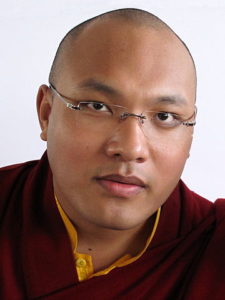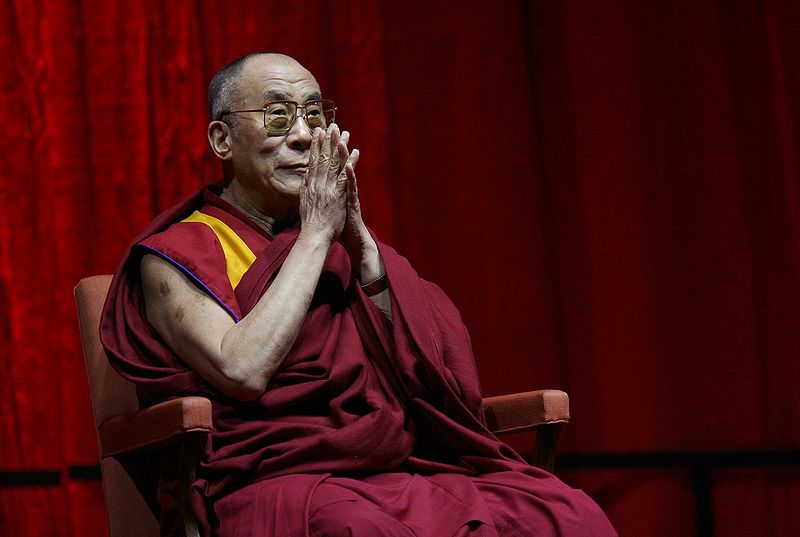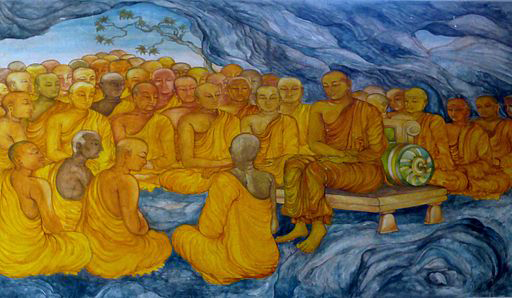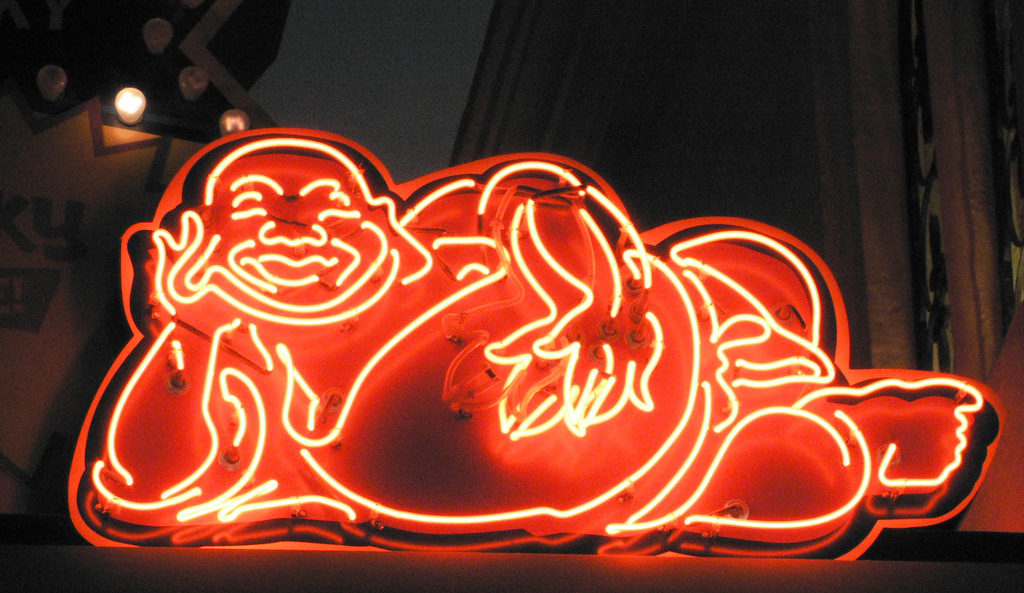Khema was a beautiful woman and one of the principal wives of King Bimbisara of Magadha, a large kingdom in what is now northern India. It is said that Queen Khema loved beauty above all things, especially her own.
King Bimbisara admired the Buddha, and he cared enough about Khema to want her to appreciate him, also. He enticed her to visit Anathapindika‘s monastery in Jeta Grove, where the Buddha was staying, by praising the beauty of its gardens. She didn’t know she was going to hear the Buddha speak.
When Khema realized she’d been maneuvered into hearing a sermon, she was annoyed. But as the Buddha spoke, Khema noticed a woman standing next to him who was even more beautiful than she was. Khema was astonished and envious.
But as Khema watched, the woman aged before her eyes. Her skin wrinkled, her hair grayed, her body sagged. Khema realized this vision was a message to her, that her beauty and privilege were just temporary conditions that would soon crumble away.
Khema became absorbed in the Buddha’s words, and she passed through all the stages of enlightenment and became an arhat that very day. The Buddha told King Bimbisara that Khema must either die and pass to final Nirvana (parinirvana), or she could live and be ordained a nun. The King gave permission for Khema to be ordained.
If you’ve noticed that people in these old stories from early Buddhist scripture realize enlightenment awfully easily, this is usually explained by the merit this individual accumulated in past lives. Khema’s prior lives appear in some of the Jataka Tales, usually as a virtuous woman and benefactor of the sangha.
Khema the Nun
The ordained Khema appears in the Pali Sutta-pitaka, in the Khema Sutta (Samyutta Nikaya 44). In this sutta, a king named Pasenadi Kosala heard that an enlightened nun and disciple of the Buddha was nearby, and went to see her. The King questioned Khema about whether the Buddha did or did not exist after death, and Khema told him the Buddha had not declared whether he would exist or not exist.
The King clearly was frustrated by this answer. So Khema said, Let me ask you a question, great King. Can your accountants count grains of sand in the Ganges?
No, lady, they cannot, the King said.
Khema continued, Can your accountants determine the number of buckets of water in the ocean?
No, lady, the King said. The ocean is deep and boundless. It is hard to fathom.
Even so, Khema said, when the Buddha is freed from physical form, he is deep and boundless and hard to fathom, like the ocean. “The Tathagata exists after death” doesn’t apply. “The Tathagata doesn’t exist after death” doesn’t apply. “The Tathagata both exists and doesn’t exist after death” doesn’t apply. “The Tathagata neither exists nor doesn’t exist after death” doesn’t apply.
The King bowed to Khema and departed. Some time later, he met the Budddha himself and asked the same questions, and he received exactly the same answers.
Khema’s Poem
A poem attributed to Khema appear in the Therigatha, or Verses of the Elder Nuns, in the Khuddaka Nikaya of the Pali Sutta-pitaka. The poem is in the form of a conversation with Mara, the demon trickster.
Khema wrote that Mara came to her in the form of a handsome man, and said, “You are young and beautiful, Khema, and so am I. Let us enjoy each other.” Khema responded,
Through this vile body, a host for disease and corruption,
I feel loathing. Lust is uprooted.
Lusts of the body and mind are cut away.
Don’t talk to me about sensuous pleasure!
Such things cannot delight me any more.
Khema became an important assistant to Maha Pajapati, the eldest nun, and along with another nun named Uppalavanna was named by the Buddha as the foremost in wisdom of all nuns.
[This is an article I wrote for the Buddhism section of About.com. However, since About.com has removed it from their servers, all rights revert to me.]





